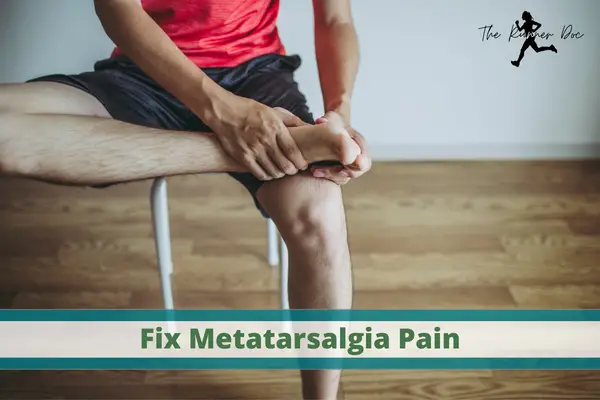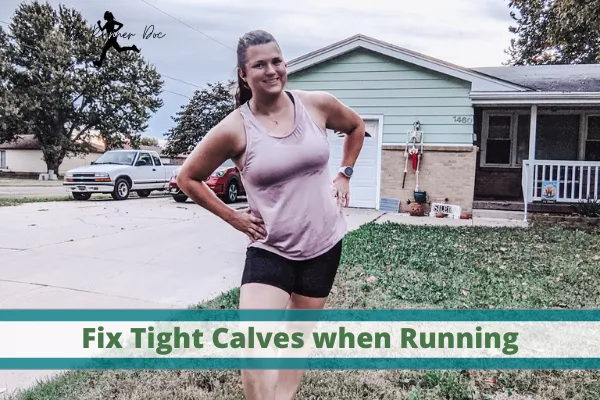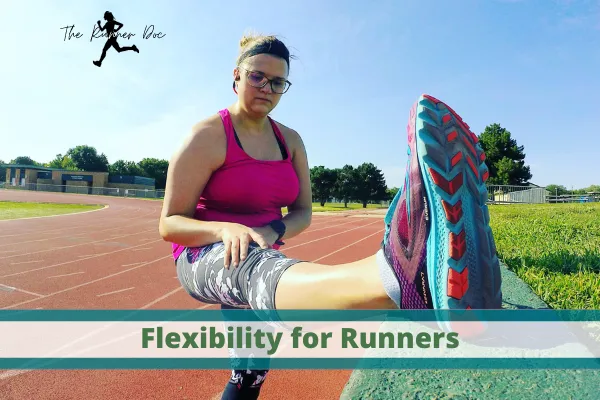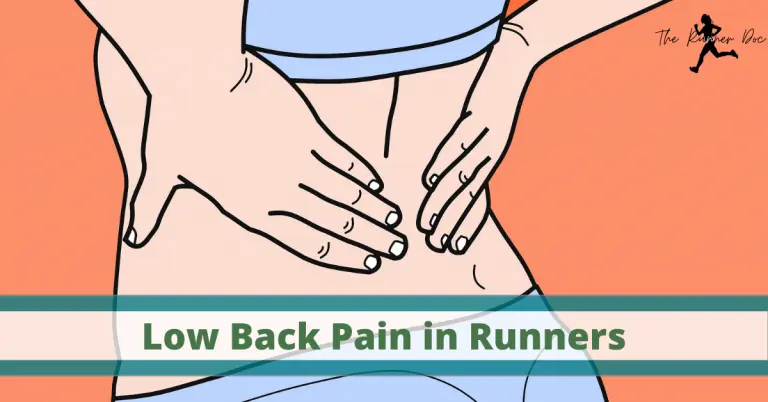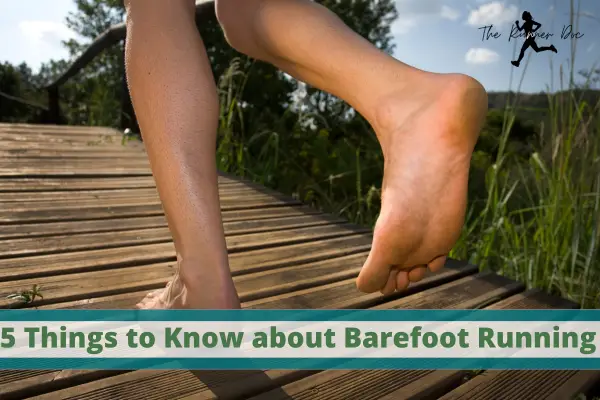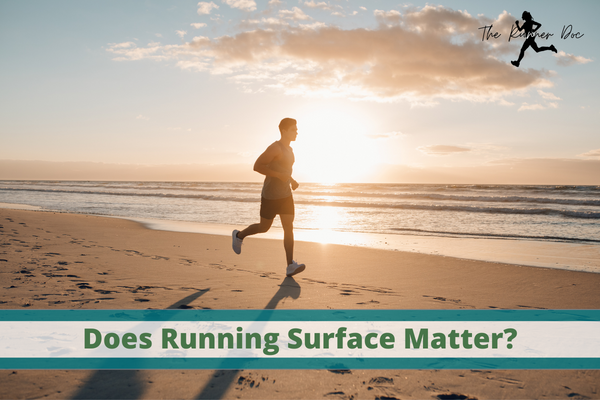Metatarsal Pain when Running {How to Fix it Quickly}
Physical Therapy for Metatarsal Pain When Running
If you are a runner, there is a good chance you have heard of Metatarsalgia. This condition can be very painful and prevent you from running or participating in other activities. In this blog post, we will discuss metatarsal pain when running, how to fix it, and some preventative measures you can take to avoid it.
Metarsalgia in runners can be a real pain. But you don’t have to live with it and participate in the pain, rest, relief, run, pain…cycle. Learn how to fix it and get back on the road running!
What is Metatarsalgia?
Metatarsalgia is a general term that refers to pain in the foot (typically around the ball of the foot). It is a condition that commonly affects runners and others sports that involve running and jumping. It is also commonly referred to as just metatarsal pain.
It is characterized by pain and inflammation in the metatarsal region of the foot, which includes the ball of the foot. The condition is often caused by overuse or repetitive impact, and it can also be aggravated by high heels or tight shoes.
Metatarsalgia can be a frustrating condition, but with proper treatment, most runners are able to return to their normal training routine. We will discuss ways to treat and prevent Metatarsalgia with Physical Therapy Exercises.
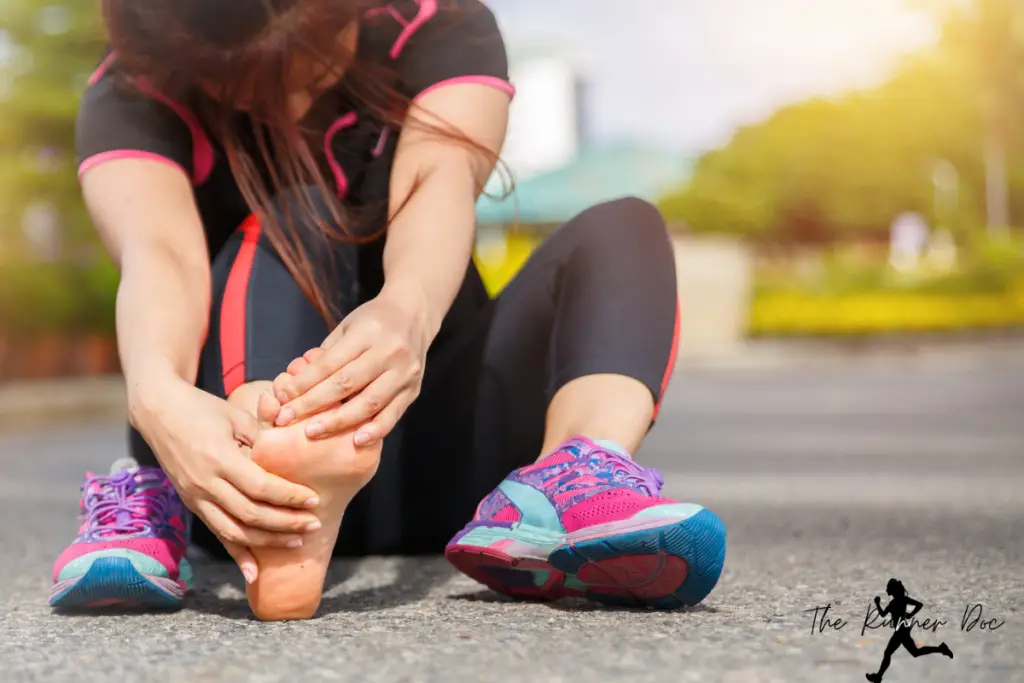
What Causes Metatarsalgia?
People who participate in high-impact or long-distance sports, such as long-distance running, cycling, and rock climbing, often have metatarsalgia.
These sports can put a lot of strain on the balls of your feet, which can cause inflammation.
Metatarsalgia is a condition that causes pain in the bones connecting the toes to the ankles. It is often caused by having high foot arches or wearing uncomfortable shoes for extended periods of time.
How do you know if you have Metatarsalgia?
Metatarsalgia is a generalized pain that is usually the result of another underlying issue. Therefore, figuring out what is truly going on is extremely important and a reason to go see a Doctor of Physical Therapy.
However, there are some common things that you would notice if you are suffering from Metatarsalgia that will help pinpoint what is going on!
Symptoms of Metatarsalgia in Runners
Metatarsalgia typically starts out as mild discomfort that gradually but steadily transforms into pain that makes it difficult to walk, stand, or run.
There is, however, frequently a deformity at your big toe and little toes as well. While not caused by Metatarsalgia, it is usually a precursor to the pain. These deformities are often associated with bunions.
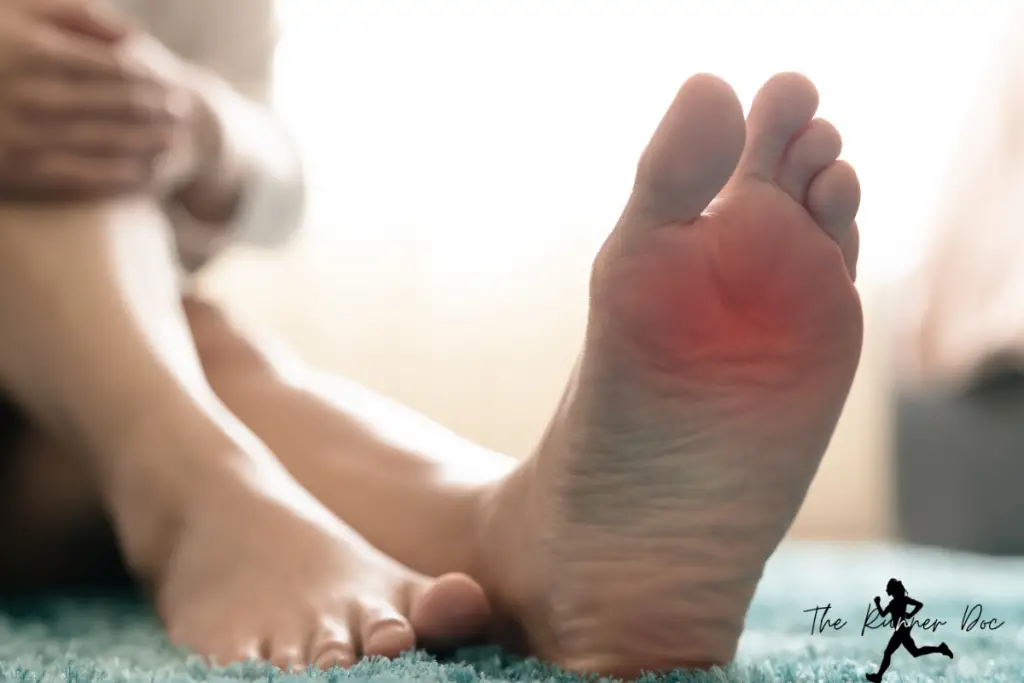
Forefoot Pain when Running
The pain from Metatarsalgia is typically limited to the area known as the ball of the foot or the plantar forefoot. It will usually start in line with the second toe (metatarsal head) through the fourth. Therefore, it is a more centralized pain at the ball of your foot.
Metatarsalgia typically presents in runners as a sharp aching or burning pain just behind the second to fourth toes. The pain in the metatarsal area will worsen when you walk, run, or stand for a period of time. In addition, flexing your foot can also cause pain.
How to Fix Metatarsalgia with Physical Therapy Exercises?
Like with most things, my first advice is to always do something as soon as you notice something is off. It is always best to address your symptoms early and correct the issues so they don’t get worse and take more time and effort to fix!
If you start noticing pain in the ball of your feet the first thing to do is to grab an ice pack, give the bottom of your foot a little massage and try crosstraining for a few days.
I don’t typically recommend rest for most injuries but this is one of those that a few days off would be beneficial. This is due to the fact that this is more of an inflammatory issue.
Metatarsalgia Treatment for Runners
As I said before, Metatarsal pain is usually a result of something else going on. The first thing is to assess your shoes and make sure they are not too worn out and that they fit properly. You should be able to move your toes around easily within your shoes.
Foot strength is often overlooked in most runners but is so important to help prevent many common foot ailments. With just a few exercises done a few times a week you can help and even prevent the recurrence of Metatarsalgia when you run!
Intrinsic Foot Strength for Metarsalgia with Foot Domes
Alternating Toe Lifts for Metatarsalgia
We want to have a lot of room between the bones of our feet. Unfortunately, many of the “fashionable” shoes on the market today squish our feet into a narrower shape that can cause bunions and decreased space between the bones. So to counteract that we need to practice getting things moving apart.
Toe Spreader for Metarsalgia in Runners
One of my favorite and easy “exercises” to do each evening is to take a sock and weave it between my toes. Then I just wear it like that for 5-10 minutes while relaxing and walking around the house.
This helps stretch things back out after being in shoes all day and lets the feet and toes get back into their natural position. You can also grab an inexpensive toe spreader too if you don’t want to use a sock!
Calf Stretches for Metatarsalgia in Runners
There are two different stretches that runners should be doing for their calves. The first is a regular calf stretch.
Second, all runners, no matter what ache and pain they do or don’t have, should be doing a soleus stretch. The calf complex is made up of two different muscles and your typical calf stretch only targets one of them! So bend that knee and get a deeper soleus stretch to help with your Metatarsalgia pain!
What Type of Shoes Should You Wear with Metatarsalgia?
Metatarsalgia is a condition that affects the balls of your feet, causing pain and inflammation. If you suffer from Metatarsalgia, you may be wondering what kind of shoes you should wear to help relieve your symptoms.
While there is no one-size-fits-all answer, there are some general guidelines that can help.
First, look for shoes with plenty of room and cushioning. This will help to take the pressure off of the balls of your feet and reduce pain.
Second, avoid high heels or any other shoes that put undue stress on the forefoot. Also, wider shoes (not the “fashionable” pointy style) are super important. Let’s change fashion and stop making our feet fit into shoes and instead fit the shoes to our feet!
Third, make sure your shoes fit well and do not rub or pinch in any areas. By following these simple tips, you can help relieve your Metatarsalgia and get back to enjoying your favorite activities pain-free!
Best Running Shoes for Metatarsal Pain
As a Doctor of Physical Therapy, the top shoes I recommend are Altra Running Shoes, Xero Shoes, VivoBarefoot Shoes, and I recently found some everyday shoes on Amazon that I’m loving by Whitin.
Keep in mind that all of these shoes are barefoot or minimalist shoes and if you aren’t used to walking in shoes with no heel drop then ease your way into them!
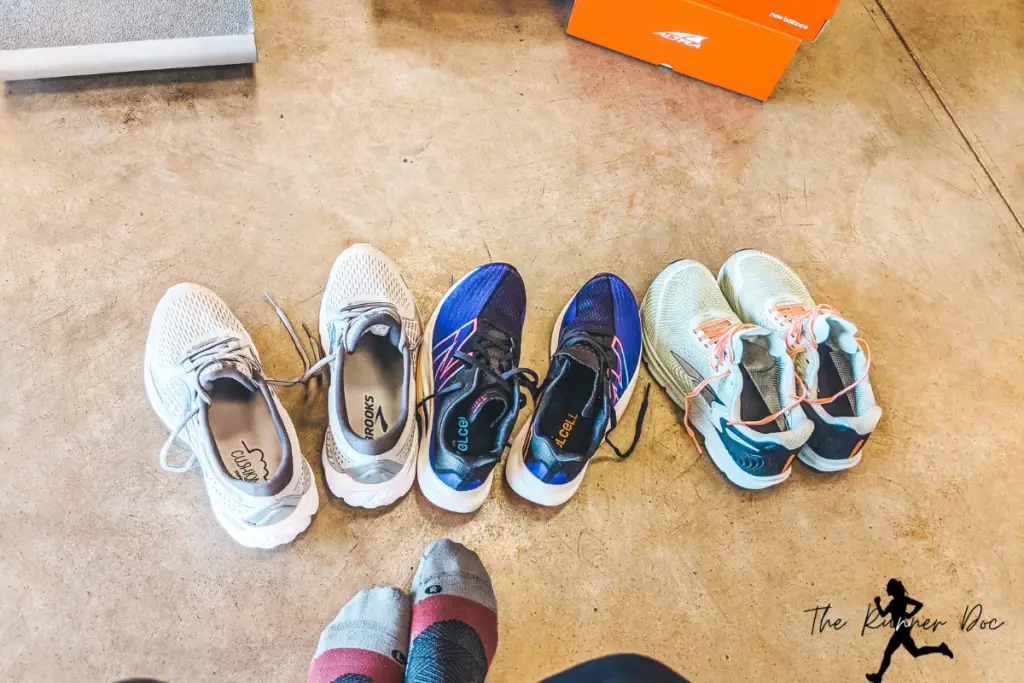
Metatarsalgia Recovery Time for Running
This can vary greatly depending on several factors. The one thing to remember is the longer you wait to start treating the pain the longer it will take to fix it.
Count on at least 3 months for full recovery though.
Treating and recovering from injury the RIGHT way takes time. You MUST trust the process and do the work.
However, remember the rule of thumb that I have. If your pain is less than a 5/10 you can keep running. Even with forefoot and metatarsal pain. But be sure to communicate with your treating physical therapist as well as sometimes this can be contraindicated.
IF your therapist tells you that you should give up running, stop running completely or something like that be sure to ask a lot of questions as to why they are recommending that. If they say to let the inflammation decrease then find a second opinion!
Final Thoughts on Metatarsal Pain when Running
Metatarsalgia is a painful condition that can be caused by deformities in the feet and bunions. It typically presents as pain on or near the ball of your foot, which worsens when you walk, run or stand for long periods of time.
The best way to fix metatarsal pain is with physical therapy exercises like toe spreads and splay stretches, toe curls, and calf stretching. You can also try wearing a toe spreader or weave a sock between your toes to help stretch things out.
As always, if the pain persists, see a physical therapist for more help.
Related Articles to Metatarsal Pain in Runners
Common Types of Heel Pain When Running
How to Fix Achilles Tendinopathy
How to Fix Flat Feet in Runners
The Best Foot Exercises for Runners
AFFILIATE DISCLOSURE
As an Amazon Associate, I earn from qualifying purchases. This post may contain affiliate links. If you use these links to buy something we may earn a commission. The Site may contain links to affiliate websites, and we receive an affiliate commission for any purchases made by you on the affiliate website using such links.
All information should be used as a tool for more knowledge on the subject topic, to use as references for later articles where applicable, or just to keep it in mind during future exercise routines or activities.
This article is not meant to give medical advice or to replace professional health care. Should any ailment occur please contact your doctor or physical therapist immediately to keep yourself safe and prevent further damage.
The author is not liable for any personal or commercial damage directly or indirectly related to the content hereof. You are responsible for adhering to local laws and regulations regarding health & safety, including proper use of equipment or safety gear, and compliance with governing healthcare associations, and state, and federal regulations.
Running and Metatarsal Pain: Ways to Fix It
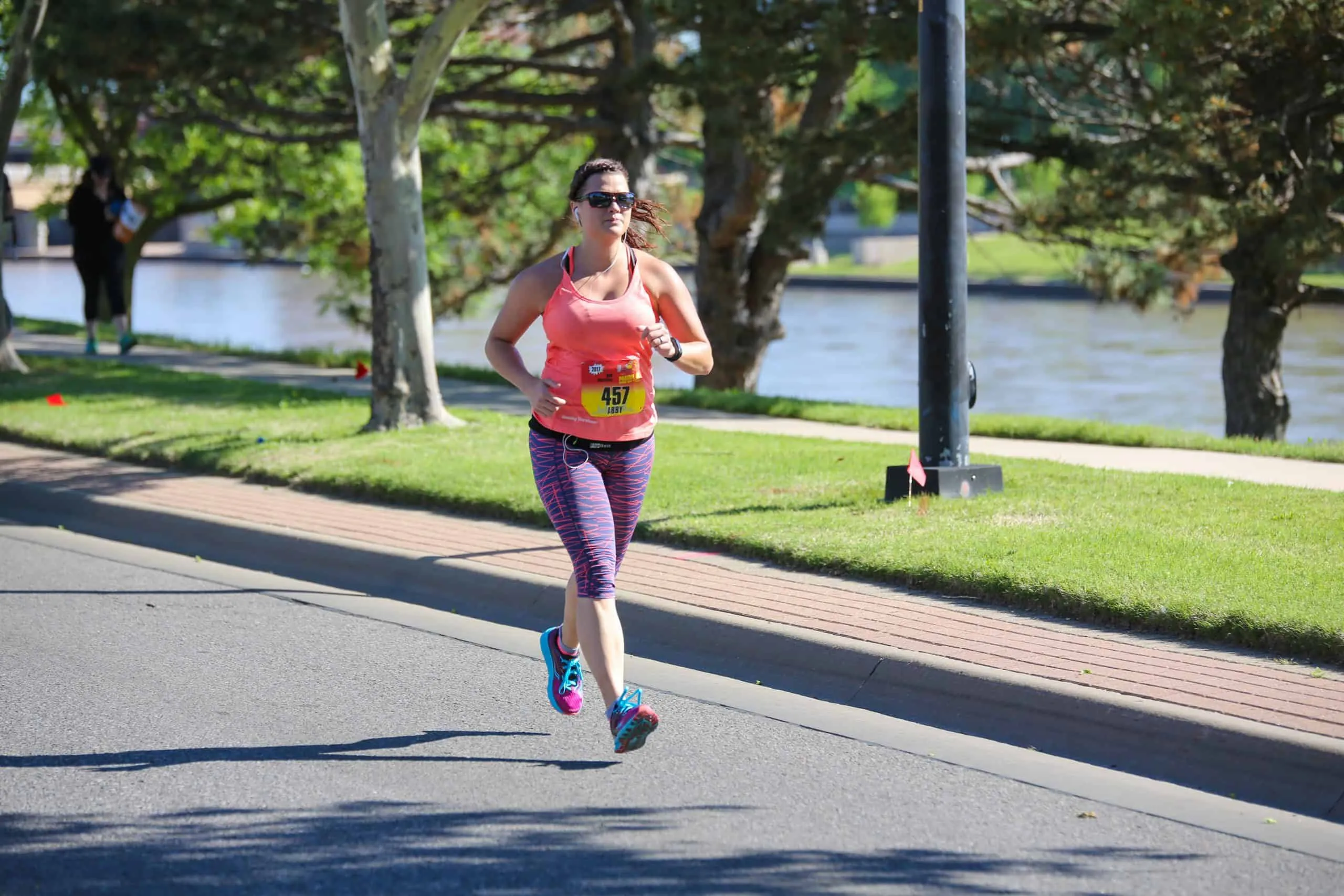
Dr. Abby Siler, PT, DPT is a Physical Therapist with 10 years of experience in a variety of settings. She has spent the majority of her time treating athletes in orthopedic clinics and worker’s compensation cases. She is a runner herself for the past 15 years and a lifelong athlete. Dr. Abby loves to teach runners how to stay injury free and out of her clinic.

